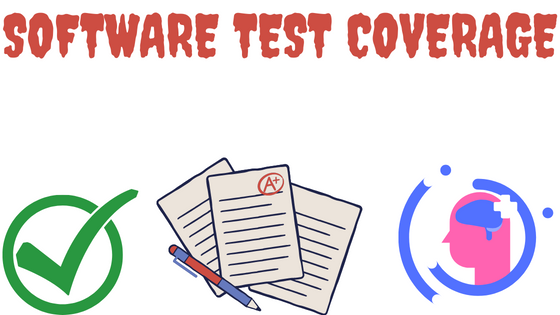Table of Contents
Comprehensive Guide to Software Quality Assurance
Software Quality Assurance (SQA) plays a crucial role in the software development lifecycle, ensuring that software products meet the highest quality standards. By implementing effective SQA practices, companies can enhance the reliability, performance, and overall user experience of their software applications. This article will delve into the importance of SQA, its key components, techniques, benefits, challenges, best practices, and future trends.

Introduction
In the fast-paced world of software development, ensuring the quality of software products is paramount. Software Quality Assurance, often abbreviated as SQA, encompasses the processes and activities aimed at preventing defects and verifying that software meets predefined quality criteria. It is an essential discipline that contributes to the successful delivery of reliable and high-performance software solutions.
Role of Software Quality Assurance in Software Development
SQA plays a pivotal role in the software development lifecycle. Its primary objective is to ensure that software products adhere to quality standards, are defect-free, and meet the needs and expectations of end users. SQA teams work in collaboration with development teams to identify and fix defects, ensure software reliability, and enhance overall software performance.
Major Roles:
- One of the fundamental tasks of SQA is test planning and strategy. SQA professionals develop comprehensive test plans that outline the testing approach, test objectives, test cases, and resources required. This strategic planning helps in efficient and systematic testing throughout the development process.
- Test case development and execution are critical aspects of SQA. Test cases are designed to cover various scenarios and functionalities of the software application. They are executed to identify defects, bugs, and inconsistencies, ensuring that the software functions as intended.
- Another crucial component of SQA is defect tracking and management. SQA teams utilize bug-tracking systems to capture, prioritize, and monitor defects throughout the software development cycle. Effective defect management ensures that issues are addressed promptly, and the software is improved based on user feedback.
- Continuous integration and automated testing are integral to SQA. By integrating code changes frequently and automating the testing process, developers and testers can quickly identify any regressions or issues introduced during the development cycle. This helps in maintaining software stability and preventing the introduction of new defects.
Software Quality Assurance Techniques and Methods
SQA employs various techniques and methods to ensure the quality and reliability of software products. Some commonly used techniques include:
- Black box testing: This technique focuses on testing the software from an external perspective, without considering the internal code structure. Testers verify the functionality, inputs, and outputs of the software without knowledge of its internal implementation.
- White box testing: White box testing, also known as structural testing, examines the internal structure and code of the software. Testers validate the code logic, control flow, and paths to ensure that all parts of the code are functioning correctly.
- Regression testing: Regression testing involves retesting previously tested software functionalities to ensure that recent code changes or bug fixes have not introduced new defects or caused existing functionality to break.
- Performance testing: Performance testing evaluates the responsiveness, scalability, and stability of the software under different workloads and conditions. It helps in identifying performance bottlenecks and optimizing the software for optimal user experience.
- Usability testing: Usability testing assesses how user-friendly and intuitive the software is for end-users. Testers evaluate the software’s interface, navigation, and overall user experience to ensure that it meets user expectations and is easy to use.
Benefits of Implementing Software Quality Assurance
Implementing robust SQA practices brings several benefits to software development organizations. Some key advantages include:
- Reduced software failures and defects: SQA helps in identifying and fixing defects early in the development process, reducing the occurrence of software failures and enhancing the overall quality and reliability of the software.
- Improved customer satisfaction: High-quality software that meets user requirements and expectations leads to increased customer satisfaction. SQA ensures that software applications are thoroughly tested, resulting in a positive user experience.
- Cost savings in the long run: Detecting and resolving defects early in the development cycle saves time and resources in the long run. It helps in avoiding costly rework, customer complaints, and potential legal issues arising from software failures.
- Enhanced software reputation: Quality software earns a good reputation in the market. SQA ensures that software products are reliable, perform well, and provide value to users, thereby building a positive brand image.
Challenges in Software Quality Assurance
While SQA is crucial for delivering high-quality software, it is not without its challenges. Some common challenges faced in implementing SQA include:
- Time and resource constraints: SQA requires dedicated time and resources for thorough testing. However, tight project schedules and resource limitations can pose challenges in conducting comprehensive testing activities.
- Keeping up with evolving technologies: As technology advances rapidly, SQA professionals need to continuously
y update their skills and knowledge to stay abreast of the latest tools, methodologies, and platforms. Keeping up with these advancements can be a challenge. - Balancing thorough testing and time-to-market: In today’s competitive market, delivering software quickly is crucial. Balancing the need for thorough testing with the pressure to meet tight deadlines can be a challenge, often leading to compromises in testing coverage.
Best Practices for Effective Software Quality Assurance
To ensure effective SQA implementation, the following best practices should be considered:
- Collaboration between development and QA teams: Close collaboration between development and QA teams fosters better communication, understanding, and alignment of goals. It ensures that quality is built into the software development process from the early stages.
- Test-driven development (TDD) approach: Test-driven development is an agile development practice where tests are written before writing the actual code. This approach helps ensure that the software meets the desired requirements and functionality, as the tests serve as specifications for the code.
- Continuous integration and delivery (CI/CD): Implementing CI/CD practices enables frequent code integration, automated testing, and continuous deployment. It helps in quickly identifying and addressing issues, ensuring that the software remains in a releasable state at all times.
- Documentation and knowledge sharing: Maintaining comprehensive documentation of test plans, test cases, and test results facilitates knowledge sharing among team members. It ensures that testing processes are well-documented, repeatable, and transferable.
Software Quality Assurance Tools and Technologies
Several tools and technologies are available to support effective SQA practices. These include:
- Test management tools: Tools like TestRail, Zephyr, and qTest help in managing test cases, test suites, and test execution, providing a centralized platform for test planning and tracking.
- Automated testing frameworks: Popular frameworks like Selenium, Appium, and JUnit allow for the automation of test cases, reducing manual effort and enabling faster and more efficient testing.
- Bug tracking systems: Tools such as Jira, Bugzilla, and Redmine help in tracking and managing software defects, enabling effective communication and collaboration between developers and testers.
- Code review and static analysis tools: Tools like SonarQube, Checkstyle, and ESLint assist in reviewing code for adherence to coding standards, identifying potential defects, and ensuring code quality.
Future Trends in Software Quality Assurance
SQA continues to evolve alongside advancements in technology. Some future trends in SQA include:
- AI and machine learning in testing: Artificial intelligence and machine learning are being leveraged to automate test case generation, analyze test results, and identify patterns in software defects, leading to more efficient and effective testing.
- DevOps and SQA integration: The integration of SQA practices with DevOps methodologies promotes continuous testing and delivery, enabling faster and more reliable software releases.
- Shift-left testing approach: The shift-left approach involves introducing testing activities early in the software development process, ensuring that defects are caught and resolved at an early stage, reducing costs, and enhancing overall quality.
- Continuous testing and delivery: The emphasis on continuous testing and delivery aims to provide constant feedback on the quality of software, enabling rapid iterations and quick responses to changing user requirements.
Conclusion
Software Quality Assurance is an integral part of the software development lifecycle, ensuring that software products meet the highest quality standards. By implementing effective SQA practices, organizations can enhance software reliability, performance, and user satisfaction. Despite the challenges faced, embracing best practices, leveraging tools and technologies, and staying updated with future trends will lead to improved software quality and successful project outcomes.
FAQs
Q: What is the difference between SQA and software testing?
A: While software testing focuses on identifying defects and issues in software, SQA encompasses a broader scope, including the entire process of ensuring quality in software development, from planning to delivery.
Q: How does SQA contribute to software security?
A: SQA plays a vital role in identifying security vulnerabilities in software. Through techniques like security testing and code reviews, SQA helps in detecting and mitigate potential security risks, ensuring robust and secure software applications.
Q: Is SQA applicable to both agile and waterfall development methodologies?
A: Yes, SQA can be applied to any software development methodology. However, in agile methodologies, SQA activities are integrated throughout the development process, while in waterfall methodologies, SQA activities are more concentrated in specific phases, such as testing and quality assurance.
Q: What are the common challenges in implementing SQA?
A: Common challenges in implementing SQA include time and resource constraints, keeping up with evolving technologies, and striking a balance between thorough testing and meeting project deadlines.
Q: Can SQA eliminate software defects?
A: While SQA aims to minimize software defects, it cannot eliminate them. However, by implementing robust SQA practices, organizations can significantly reduce the number of defects and enhance the overall quality of their software products.
Q: How does SQA contribute to cost savings in the long run?
A: Detecting and resolving defects early in the development process helps avoid costly rework, customer complaints, and potential legal issues. By investing in SQA, organizations can save resources and costs associated with fixing software failures post-release.
Q: What is the significance of collaboration between development and QA teams in SQA?
A: Collaboration between development and QA teams promotes effective communication, shared understanding of requirements, and early identification of potential issues. It ensures that quality is prioritized and integrated throughout the software development process.
In conclusion, Software Quality Assurance is essential for ensuring the quality, reliability, and performance of software applications. By implementing effective SQA practices, organizations can deliver high-quality software products that meet user expectations, enhance customer satisfaction, and contribute to long-term success. Despite the challenges involved, embracing best practices, leveraging tools and technologies, and staying updated with emerging trends will enable organizations to achieve superior software quality.



